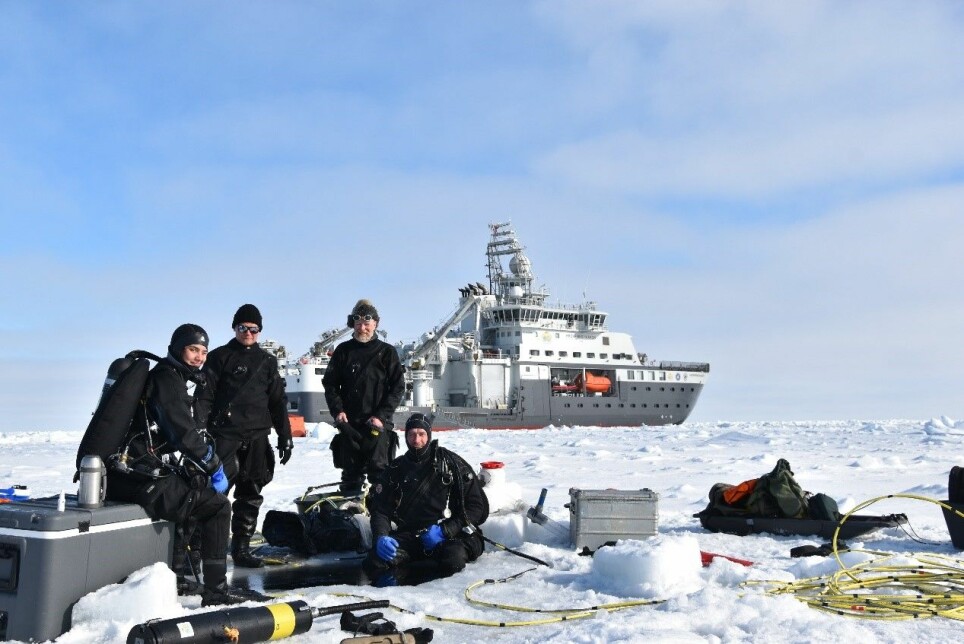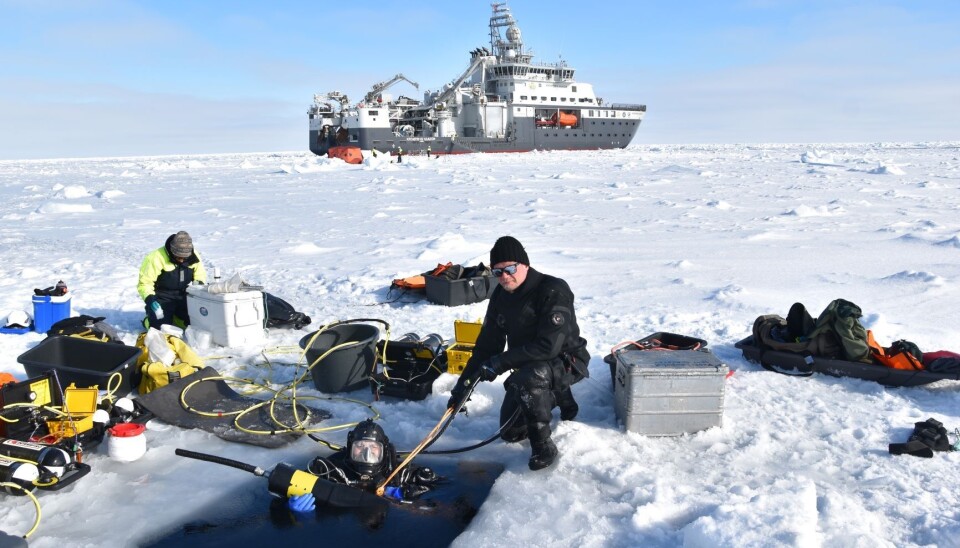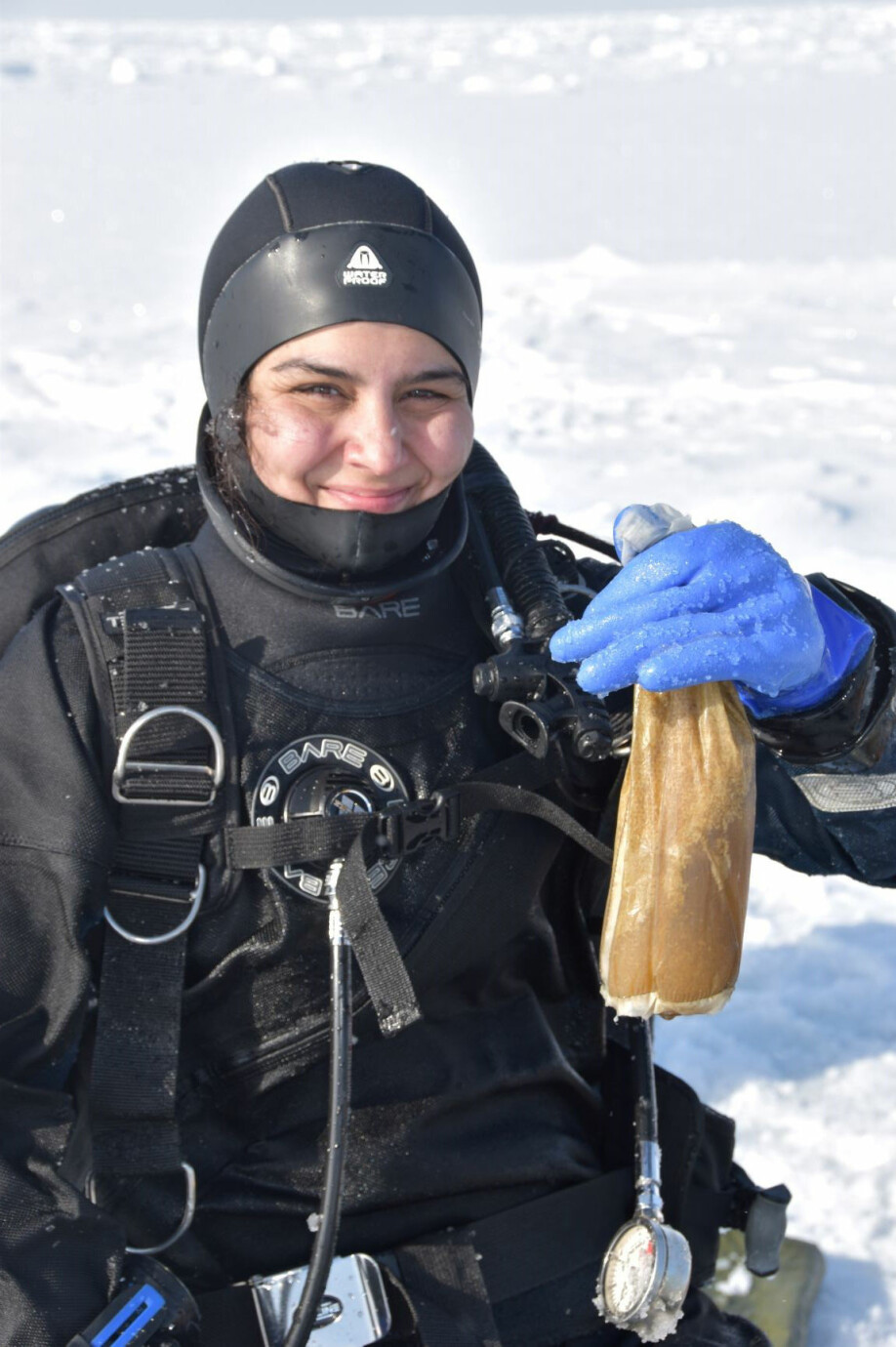
Nansen Legacy Q2 Scientific divers sample ice algae and zooplankton below sea ice
The Nansen Legacy Q2 cruise has its own dive team with four scientific divers from the Norwegian Polar Institute: Divers Mikko Vihtakari and Amalia Keck, Divers/Dive leaders Peter Leopold and Haakon Hop.


On the ice
We were really excited to go on the ice at the first ice station P4, after days of maintaining and testing of dive gear while the other scientists had been super busy with sampling water, plankton and fish, and doing experiments. The dive leader was on the bridge at 6 in the morning, together with the ice researchers, Adam Steer and Polona Itkin, and cruise leader Martin Ludvigsen, to find a suitable ice flow for both above and below ice activities. Not easy, since all floes in the area were pieces frozen into a conglomerate of larger floes, and all were thin, maximum 20-30 cm. Too thin for transport of equipment with snowmobiles and heavy sledges, so we had to drag our heavy dive equipment on sledges to get to the spot were we were going to dive, about 200 m from the research vessel, Kronprins Haakon. At least we got warmed up in the cold air of -12 degrees celsius. We used a motorized ice auger and a chain saw with 90 cm long blade to make a dive hole in the ice. Then used ice screws and slings to pull out the pieces. One of the fastest dive holes we ever made – in only 20 cm thick ice, and we soon surrounded it with all our dive gear. We now dive with air from the surface in a simple system called DP1. The air hose is strong enough to function as safety line to the diver and has a communication cord so that each diver can talk with the line tender.
Below the ice
Under the ice, the visibility was about 30 meters, which is very good because of an increasing plankton bloom. The underside of the sea ice was brown with ice algae, which are attached to the skeletal layer of ice crystals. The ice algae were diatoms, with dominating species Nitzschia frigida and > Fragilariopsis cylindrus. We sampled them with slurp guns, which is a gigantic syringe that takes 3.5 litre when full. For more material, we use suctions samplers, which are battery-operated vacuum cleaners. Samples end up in a plankton net inside the pump, and we got lots of ice algae! There are also zooplankton organisms below the sea ice, which we sample with square plankton nets swum by divers over a distance of 80 metre from/to the dive hole at different depths below the sea ice. We also attached two sediment traps below the sea ice and bottles with algae for measuring primary production. Then we collected other samples on our long list, and finally some time for photography for Peter with his underwater camera.


In nice weater!
The weather was nice and sunny both days. The first day is always a challenge to get all divers and gear working, adjust the amount of lead to get the right buoyancy In the water. The second day was easier, and we were the very effective with sampling and got everything done before dinner. Back on the research vessel, we have to rinse and dry gear, fill bottles with the dive compressors, and also close down the decompression chamber, which is in a container on deck ready to receive an injured diver if needed.







